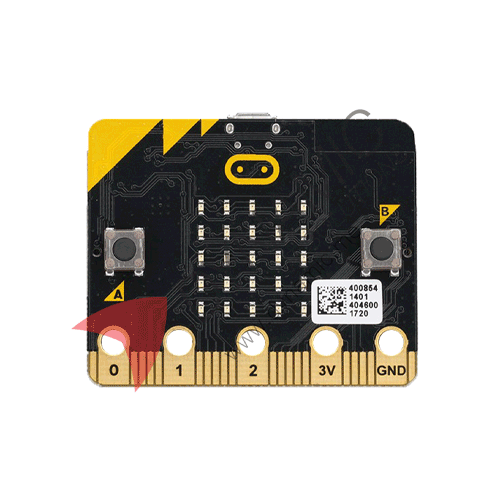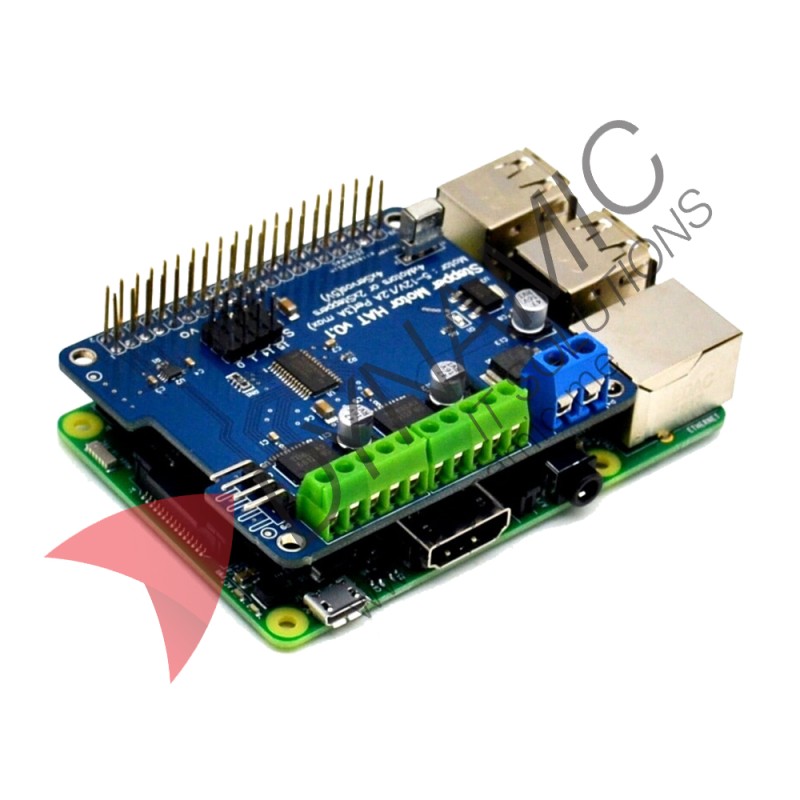
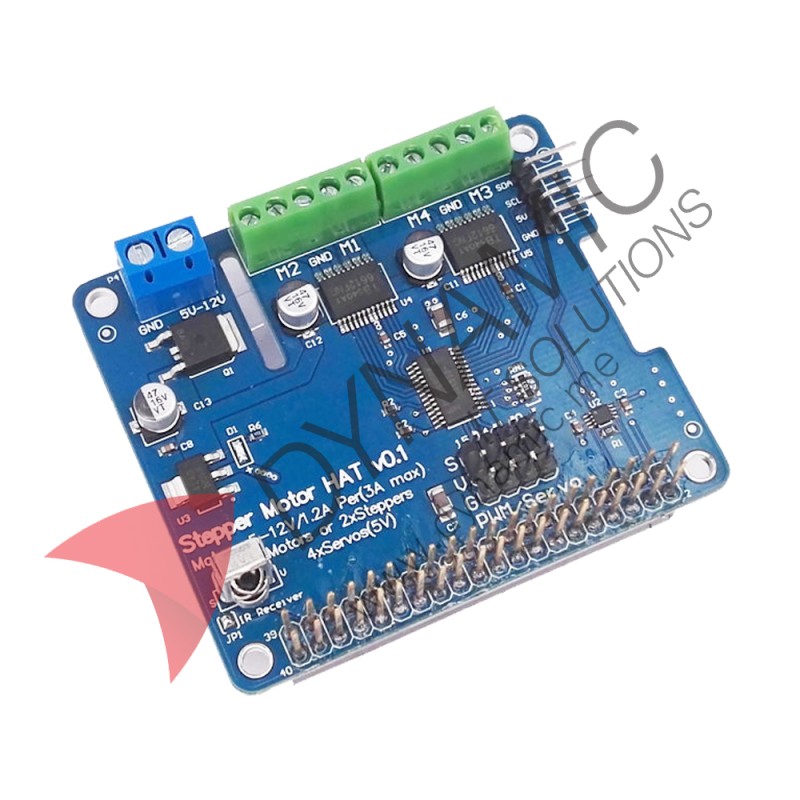
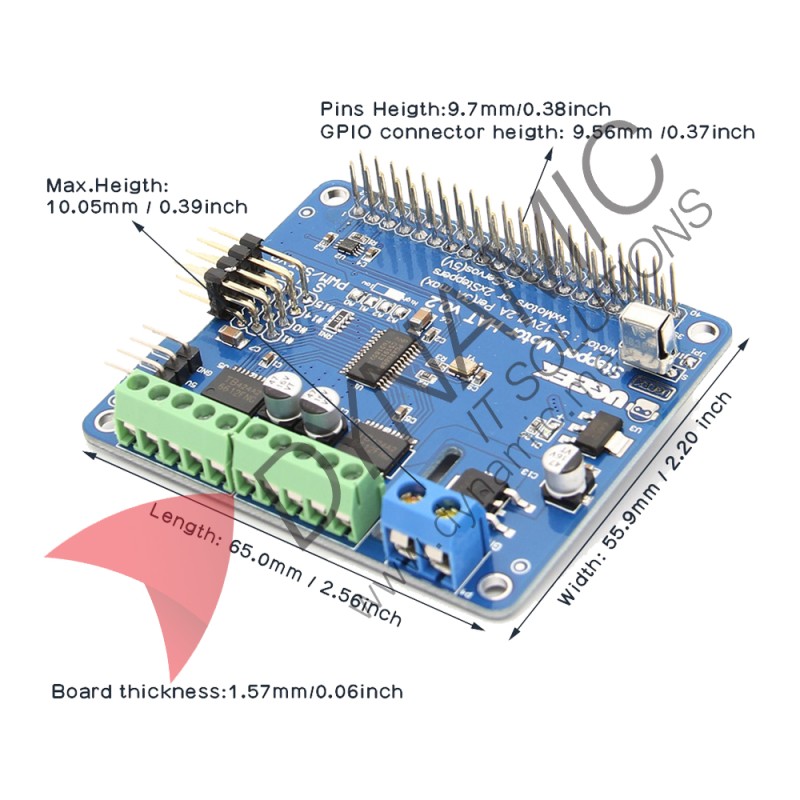
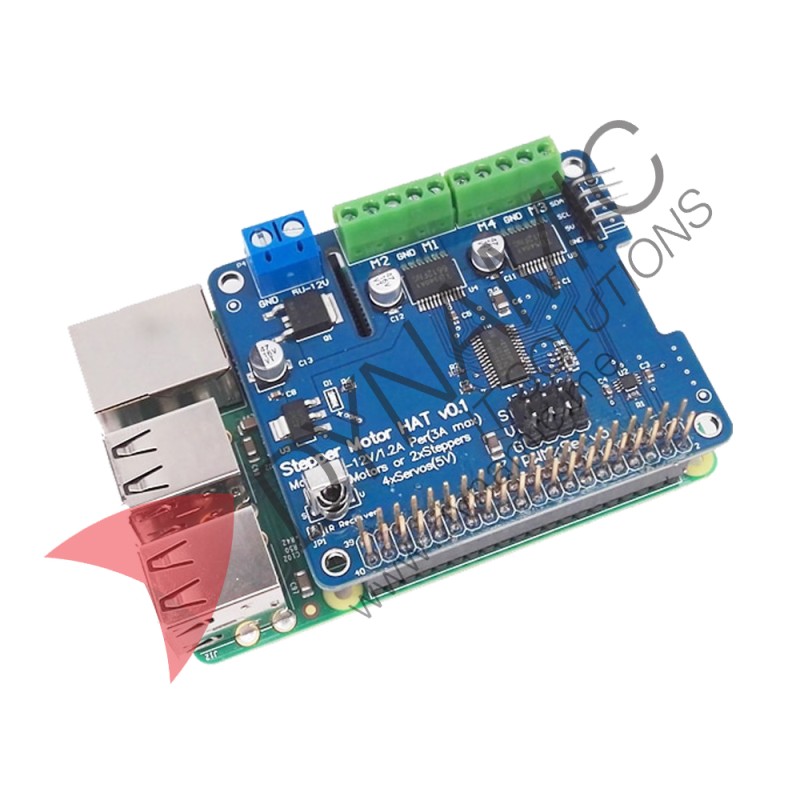
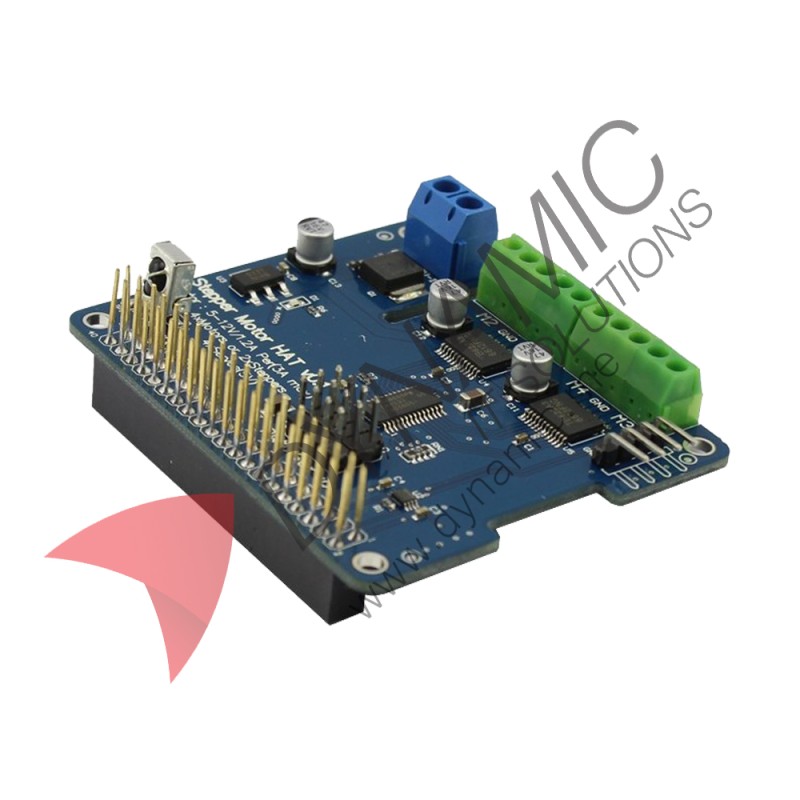
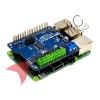
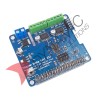
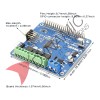
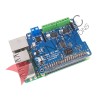
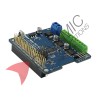
- Availability: In Stock
- Weight: 0.03kg
- Dimensions: 7.00cm x 5.50cm x 1.50cm
- SKU: ELE-DEB-RAA-014
Function:
4 H-Bridges:provides 1.2A per bridge (3A peak) with thermal shutdown protection, internal kickback protection diodes. Can run motors on 5VDC to 12VDC.
Up to 4 bi-directional DC motors with individual 8-bit speed selection (so, about 0.5% resolution)
Up to 2 stepper motors (unipolar or bipolar) with single coil, double coil, interleaved or micro-stepping.
Up to 4 Channel 12-bit PWM/Servo(5V)
One Infrared Receiver(GPIO26)
Big terminal block connectors to easily hook up wires (18-26AWG) and power
Polarity protected 2-pin terminal block and jumper to connect external 5-12VDC power
Works best with Raspberry Pi model A+, B+, or Pi 2;
Voltage requirements
The first important thing to figure out what voltage the motor is going to use. If you're lucky your motor came with some sort of specifications. Some small hobby motors are only intended to run at 1.5V, but its just as common to have 6-12V motors. The motor controllers on this HAT are designed to run from 5V to 12V.
MOST 1.5-3V MOTORS WILL NOT WORK or will be damaged by 5V power
Current requirements
The second thing to figure out is how much current your motor will need. The motor driver chips that come with the kit are designed to provide up to 1.2 A per motor, with 3A peak current.
Note that once you head towards 2A you'll probably want to put a heat-sink on the motor driver, otherwise you will get thermal failure, possibly burning out the chip.
If you don't have to take your project on the go, the 9V 1A, 12V 1A, or 12V 5A will work nicely 99% of 'weird motor problems' are due to having a voltage mismatch (too low a voltage, too high a voltage) or not having a powerful enough supply! Even small DC motors can draw up to 3 Amps when they stall.
Power it up
Wire up your battery pack to the Power terminal block on the right side of the HAT. It is polarity protected but still its a good idea to check your wire polarity. Once the HAT has the correct polarity, you'll see the LED light up
Please note the HAT does not power the Raspberry Pi, and we strongly recommend having two separate power supplies - one for the Pi and one for the motors, as motors can put a lot of noise onto a power supply and it could cause stability problems!
We offer fast worldwide shipping with reliable service. Orders are processed within 12h and delivered in:
- Lebanon:
1–3 working days via Aramex ($4 fee, extra for machines). - International:
3–10 working days (fees depend on weight/volume).
You'll receive an email with tracking details once your order ships. Import taxes may apply and are the customer's responsibility.









































